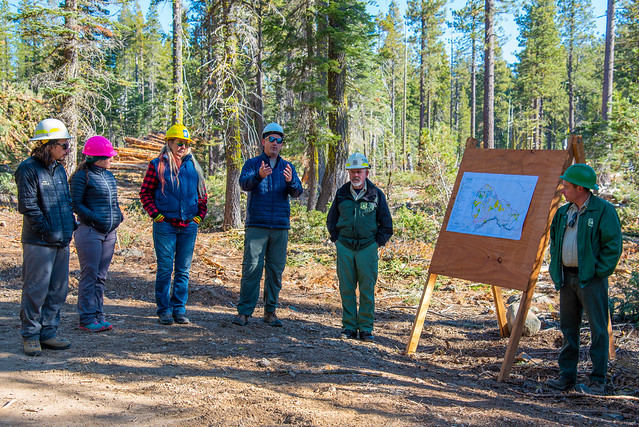Written by Nathalie Woolworth, USDA Forest Service Conservation Finance Program with guest author Zach Knight, Blue Forest Conservation in Forestry
Jul 09, 2020

The USDA Forest Service manages 193 million acres of forests and grasslands, 58 million of which are in need of restoration. Forest Service scientist are doing this by thinning and conducting prescribed burning that restores natural tree density, improves forest health and mitigates wildfire risk.
Restoration of national forests comes with an estimated price tag of $65 billion. The Forest Resilience Bond (FRB) is an innovative public-private partnership model that presents a scalable financing option to help take on the costs of this critical work to protect people, communities and resources.
The FRB supports USDA’s Agriculture Innovation Agenda, which seeks to make the landscape more resilient by investing in active forest management and restoration. It also aligns with the Forest Service’s Shared Stewardship Strategy of collaborating across boundaries to meet landscape-scale restoration needs.
Developed by Blue Forest Conservation in partnership with the World Resources Institute, the FRB allows private capital to cover the upfront cost of forest health treatments. The model brings together stakeholders that benefit from restoration to share the cost of reimbursing investors at a moderate rate of return as the environmental and social benefits of project activities are realized. By covering upfront project costs, the FRB accelerates the pace and scale of restoration work – tackling fire risk now and avoiding the much greater cost of inaction.
In 2018, the Forest Service signed an agreement with Blue Forest Conservation documenting their shared commitment to landscape-scale restoration. Later that year the Tahoe National Forest and Blue Forest Conservation partnered to launch the Yuba Project. This is the first FRB, and provides $4 million in private capital from four investors to finance ecological restoration treatments across 15,000 acres of national forest. The State of California and a municipal water and hydroelectric utility are repaying investors at contracted rates as restoration work is completed, with the Tahoe National Forest providing in-kind support and funding for project planning, development and execution.

Now that FRB financing in place, the Tahoe National Forest is working with their long-time partner, the National Forest Foundation, to implement work on the ground through a Master Stewardship Agreement. FRB financing has made it possible for the Tahoe to accelerate work and complete projects in just four years instead of the projected 10 to 12 years.
Collaboration around the Yuba FRB has also laid the groundwork for a new partnership. In 2019, nine federal, state, tribal and nongovernmental partners established the North Yuba Forest Partnership, a collaborative focused on forest restoration across 275,000 acres of public and private lands in Northern California. The Partnership plans to finance more than $100 million of unfunded restoration work using a FRB.
With this success, national forests across the West are partnering with Blue Forest Conservation to see how FRB might be applied to other areas. This is just the next step in the Forest Service’s larger mission to leveraging resources, support partners and build on successes to take on the challenges that face America’s forests and rural communities.
Source: U.S. Department of Agriculture
Technical Supported and brought to you by China News Release

